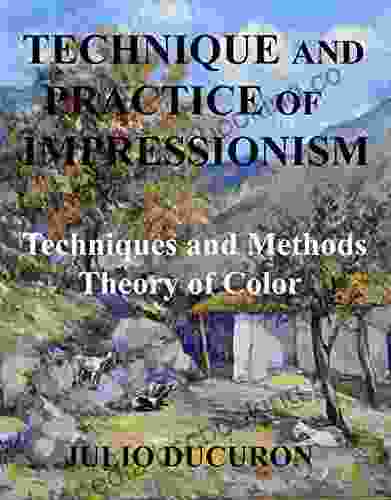Unlocking the Potential of Every Child: A Comprehensive Guide to the Child-Centered Approach

In a world where education often prioritizes standardized testing and rigid curricula, the child-centered approach offers a refreshing and transformative perspective on learning. This innovative methodology places the unique needs, interests, and strengths of each child at the forefront, creating an environment that fosters holistic development, academic excellence, and a lifelong love of learning.
In this comprehensive guide, we delve into the principles, practices, and benefits of the child-centered approach, providing a roadmap for educators, parents, and caregivers to nurture the intellectual, emotional, and social growth of every child.
5 out of 5
| Language | : | English |
| File size | : | 2041 KB |
| Screen Reader | : | Supported |
| Print length | : | 100 pages |
| Lending | : | Enabled |
Defining the Child-Centered Approach
The child-centered approach is an educational philosophy that emphasizes the individual needs, experiences, and perspectives of children. It believes that every child is a unique learner with innate potential, and that education should be tailored to meet their specific strengths, interests, and developmental stages.
Central to the child-centered approach is the belief that children learn best through active engagement, play, and exploration. By providing children with opportunities to make choices, take ownership of their learning, and express themselves creatively, educators can create a classroom environment that is both stimulating and empowering.
Principles of the Child-Centered Approach
Several fundamental principles guide the child-centered approach:
* Respect for the Child: Educators value children's perspectives, opinions, and individuality. They treat children with dignity and respect, fostering a sense of belonging and self-worth. * Individualization: Every child is seen as a unique learner with their own strengths, interests, and needs. Education is tailored to meet individual differences, allowing children to progress at their own pace and explore topics they are passionate about. * Active Learning: Children learn best through hands-on experiences, play, and exploration. Educators create a classroom environment that encourages children to be active participants in their learning, engaging their senses and fostering curiosity. * Play-Based Learning: Play is an essential component of the child-centered approach. Through play, children develop social, emotional, cognitive, and physical skills. Educators incorporate play activities into the classroom, providing children with opportunities to learn and grow while having fun. * Holistic Development: The child-centered approach focuses on developing the whole child, not just their academic abilities. Educators recognize the importance of social-emotional, physical, and creative development, and provide opportunities for children to grow in all areas.
Practices of the Child-Centered Approach
The child-centered approach translates these principles into concrete practices in the classroom:
* Flexible Curriculum: Curriculum is adapted to meet the interests and needs of the children. Educators collaborate with children to plan activities and lessons that are engaging and meaningful. * Choice and Autonomy: Children are given choices in their learning, from the topics they explore to the activities they participate in. This helps foster independence and a sense of ownership over their education. * Inquiry-Based Learning: Children are encouraged to ask questions, investigate, and explore their own interests. Educators provide guidance and support, but allow children to be in the driver's seat of their learning. * Differentiated Instruction: Instruction is tailored to individual student needs. Educators provide different activities, materials, and support to ensure that every child is learning at their own level and pace. * Assessment for Learning: Assessment is used to inform instruction and provide feedback to children. Educators use a variety of assessment methods, such as observation, portfolios, and self-reflection, to gain insights into student progress.
Benefits of the Child-Centered Approach
Research has shown that the child-centered approach has numerous benefits for children:
* Enhanced Academic Achievement: Children in child-centered classrooms demonstrate higher levels of academic achievement, particularly in reading, math, and science. * Increased Motivation and Engagement: Children are more motivated and engaged in their learning when their interests and needs are met. They take ownership of their education and become lifelong learners. * Improved Social-Emotional Skills: Child-centered classrooms promote cooperation, empathy, and social responsibility. Children learn how to work together, resolve conflicts, and express themselves effectively. * Increased Creativity and Innovation: The child-centered approach encourages children to think outside the box, express themselves creatively, and take risks in their learning. * Holistic Development: Child-centered education fosters the development of the whole child, creating well-rounded individuals who are confident, resilient, and capable in all areas of life.
Implementing the Child-Centered Approach
Implementing the child-centered approach requires a shift in mindset and practice from traditional educational models. Here are some key steps for educators and parents:
* Get to Know the Children: Spend time observing and interacting with children to understand their interests, strengths, and needs. * Provide Choices and Autonomy: Offer children choices in their learning, from topics to activities. Encourage them to take ownership of their education. * Create a Playful Learning Environment: Incorporate play-based activities into the classroom or home learning space. Provide opportunities for children to explore, experiment, and learn through play. * Be Flexible and Adaptable: The child-centered approach requires flexibility and adaptability. Be prepared to adjust the curriculum and activities based on children's interests and needs. * Collaborate with Parents and Families: Engage parents and families in the educational process. Share information about the child-centered approach and encourage them to support children's learning at home.
Challenges and Considerations
While the child-centered approach offers many benefits, there are some challenges to consider:
* Time and Resources: Implementing the child-centered approach can be time-consuming and require additional resources. Educators and parents need to be prepared to invest in providing individualized learning experiences. * Assessment: Assessing student progress in a child-centered classroom can be challenging, as traditional standardized tests may not accurately reflect the holistic nature of their learning. * Resistance to Change: Some educators and parents may be resistant to change and may be skeptical of the child-centered approach. It is important to provide clear communication and support to help them understand the benefits and implementation process.
The child-centered approach is a transformative educational philosophy that prioritizes the unique needs, interests, and strengths of every child. By fostering active engagement, play-based learning, and individualized instruction, educators and parents can create learning environments that empower children to reach their full potential, develop a love of learning, and thrive in all areas of life.
Embracing the child-centered approach is an investment in the future of children, ensuring that they have the skills, confidence, and creativity to navigate the challenges and opportunities of the 21st century. As we move forward, let us continue to advocate for and implement this innovative educational approach, unlocking the potential of every child and inspiring a lifelong journey of learning and growth.
5 out of 5
| Language | : | English |
| File size | : | 2041 KB |
| Screen Reader | : | Supported |
| Print length | : | 100 pages |
| Lending | : | Enabled |
Do you want to contribute by writing guest posts on this blog?
Please contact us and send us a resume of previous articles that you have written.
 Book
Book Novel
Novel Page
Page Chapter
Chapter Text
Text Story
Story Genre
Genre Reader
Reader Library
Library Paperback
Paperback E-book
E-book Magazine
Magazine Newspaper
Newspaper Paragraph
Paragraph Sentence
Sentence Bookmark
Bookmark Shelf
Shelf Glossary
Glossary Bibliography
Bibliography Foreword
Foreword Preface
Preface Synopsis
Synopsis Annotation
Annotation Footnote
Footnote Manuscript
Manuscript Scroll
Scroll Codex
Codex Tome
Tome Bestseller
Bestseller Classics
Classics Library card
Library card Narrative
Narrative Biography
Biography Autobiography
Autobiography Memoir
Memoir Reference
Reference Encyclopedia
Encyclopedia Abby Stein
Abby Stein Alan Moore
Alan Moore Adrian Miller
Adrian Miller Alan Gelb
Alan Gelb Albert Badre
Albert Badre Adrian Wallwork
Adrian Wallwork Alex C Ewing
Alex C Ewing Abby Denson
Abby Denson Adam Braus
Adam Braus Albert Murray
Albert Murray Alan Levinovitz
Alan Levinovitz Adrian Colin Doyle
Adrian Colin Doyle Aaron Reynolds
Aaron Reynolds Alex Horne
Alex Horne Abraham Douglas
Abraham Douglas Alex J Pollock
Alex J Pollock Alex Rosenblat
Alex Rosenblat Ada Calhoun
Ada Calhoun Aharon Appelfeld
Aharon Appelfeld Albie Sachs
Albie Sachs
Light bulbAdvertise smarter! Our strategic ad space ensures maximum exposure. Reserve your spot today!
 Vincent MitchellFollow ·17.5k
Vincent MitchellFollow ·17.5k Jamal BlairFollow ·17.7k
Jamal BlairFollow ·17.7k Braden WardFollow ·12.5k
Braden WardFollow ·12.5k Italo CalvinoFollow ·8k
Italo CalvinoFollow ·8k Felix HayesFollow ·5k
Felix HayesFollow ·5k Gabriel MistralFollow ·6.6k
Gabriel MistralFollow ·6.6k Javier BellFollow ·2.7k
Javier BellFollow ·2.7k Gabriel HayesFollow ·19k
Gabriel HayesFollow ·19k

 Francis Turner
Francis TurnerArt and Politics in the Shadow of Music
Music has...

 Jaylen Mitchell
Jaylen MitchellHow Algorithms Are Rewriting The Rules Of Work
The workplace is...

 Chandler Ward
Chandler WardRio de Janeiro & Minas Gerais Footprint Handbooks:...
Embark on an extraordinary adventure through...

 David Mitchell
David MitchellThe Story of Depression: Understanding and Treating a...
Delving into the Shadows of...

 Al Foster
Al FosterStatistics Done Wrong: The Woefully Complete Guide
Tired of being...

 DeShawn Powell
DeShawn PowellJulia Child's Second Act: A Tale of Triumph,...
Julia Child is an...
5 out of 5
| Language | : | English |
| File size | : | 2041 KB |
| Screen Reader | : | Supported |
| Print length | : | 100 pages |
| Lending | : | Enabled |












